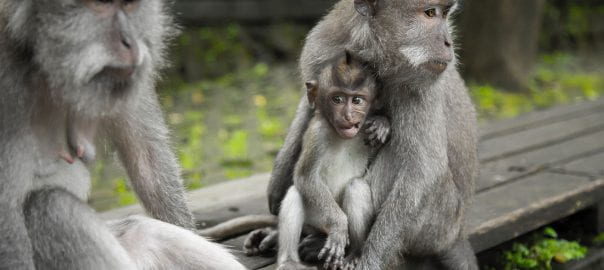What do you think is more important for a healthy development: food or human contact? Psychologists have studied this question in depth for years, starting with Harry Harlow’s experiments with Rhesus Monkeys. Harry Harlow spent years looking into rhesus monkey’s developmental patterns and social bonding skills. Through his study, he came to the conclusion that touch and maternal contact is just as important, if not more important than food when it comes to healthy development.
In his experiment, Harry Harlow raised monkeys in isolation. They had no contact with mother figures, friends, or family members. Instead, the monkeys had two surrogate mother figures, one made entirely out of wires, and one covered in cloth. Throughout the experiment, he gave the monkey the choice between the two mothers in multiple scenarios. What he found was that the baby monkeys continuously chose the cloth covered mothers, only going to the wire mothers when food was absolutely necessary. You can read more about this study here.
This study is an important part about what changed our approach to bonding and relationships. Through analyzing this study and its results, psychologists and doctors came to the conclusion that touch is necessary for survival, not just a pleasantry in early childhood. This is made obvious in encounters with children who are denied maternal contact in their early months. Hospitals who don’t promote holding and contact immediately after birth often have higher mortality rates than those that encourage nurses to interact with the babies physically.1
Holding your baby is so much more than just a sweet moment between parent and baby. A mother’s touch changes a child’s life for the better, making them more able to build relationships, handle stress, understand other people’s emotions, and connect on a deeper level with more people. Who knew monkeys could teach us this much!
- Takeuchi, Mika S., et al. “The Effect of Interpersonal Touch During Childhood on Adult Attachment and Depression: A Neglected Area of Family and Developmental Psychology?” Journal of Child and Family Studies, vol. 19, no. 1, 24 Feb. 2009, pp. 109–117., doi:10.1007/s10826-009-9290-x.



